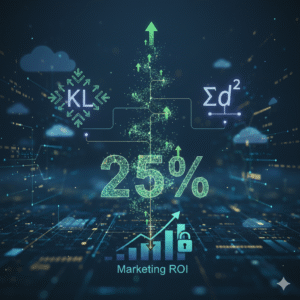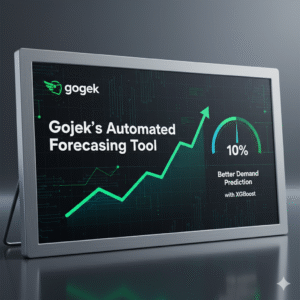Imagine this: It’s a bustling Friday night in San Francisco, and you’re a marketer at a ride-sharing giant like Lyft. Thousands of potential riders are scrolling through their phones, but your ad budget is stretched thin across Google, Facebook, and email. One wrong bid, and you’re burning cash on low-value clicks. Sound familiar? That’s the chaos Lyft faced before revolutionizing their game with the Lyft marketing automation platform. This powerhouse, dubbed Symphony, didn’t just streamline operations—it supercharged ROI, slashing manual decisions and letting creativity soar. In 2025, as the global ride-sharing market surges to $149.88 billion, mastering tools like this isn’t optional; it’s your ticket to outpacing competitors like Uber.
In this guide, we’ll unpack the Lyft marketing automation platform layer by layer. From its core features to real-world wins, you’ll get actionable insights backed by fresh stats, trends, and tips. Whether you’re a growth hacker in mobility or a CMO eyeing efficiency, stick around—we’re turning tech jargon into your unfair advantage.
Table of Contents
What is Lyft’s Marketing Automation Platform Symphony?
At its heart, the Lyft marketing automation platform is Symphony—an in-house orchestration beast built to predict, allocate, and deploy marketing magic at scale. Launched back in 2019 but evolving rapidly, Symphony tackles the nightmare of coordinating region-specific campaigns across 300+ cities. Picture this: Without it, marketers juggled thousands of daily tweaks—bids, creatives, audiences—leading to burnout and suboptimal spends. Now? Automation handles the grunt work, freeing humans for high-stakes innovation.
Why does this matter in 2025? With 50% of companies already leveraging marketing automation tools, Lyft’s approach stands out. It’s not off-the-shelf software; it’s a custom Lyft Symphony automation system blending machine learning (ML), data pipelines, and API wizardry. Key to its success? A feedback loop where performance data refines models daily, ensuring decisions get smarter over time.
Fun fact: Lyft powers over 50 million carbon-neutral rides monthly, and Symphony’s role in user acquisition? It’s the silent engine behind acquiring millions of riders efficiently. If you’re curious about the blueprint, dive into Lyft’s engineering deep-dive here.
Key Features of the Lyft Marketing Automation Platform
Symphony isn’t a monolith; it’s a trio of interconnected modules: the Lifetime Value (LTV) Forecaster, Budget Allocator, and Bidders. Each packs a punch:
- LTV Forecaster: Predicts a new user’s long-term value early in their journey. Using historical data from Apache Hive and Presto, it factors in supply-demand dynamics in Lyft’s two-way marketplace. Result? Budgets flow to high-potential channels, boosting ROAS by focusing on quality over quantity.
- Budget Allocator: Employs Markov Chain Monte Carlo (Thompson Sampling) to divvy up spends. It fits curves like LTV = a * (spend)^b, sampling parameters for optimal exploration. In volatile markets, this randomness prevents getting stuck in local optima—think 20-30% better efficiency over static rules.
- Bidders: Channel-specific actors that push changes via APIs to Google Search, Display, Social, and more. Tuners adjust levers like keywords and bid types, incorporating recency and seasonality. For instance, during peak hours, bids spike intelligently to capture surge demand.
These features make the Lyft marketing automation platform a benchmark for Lyft marketing technology.
How Does Lyft Automate Its Marketing Campaigns?
Automation at Lyft isn’t set-it-and-forget-it; it’s a dynamic dance. The Lyft marketing automation platform ingests performance data, runs predictions, and executes in real-time. Take automated marketing campaigns at Lyft: Daily, Symphony scans metrics from 1,000+ keywords, auto-adjusts bids, kills underperformers, and reallocates to winners. This cross-functional beast—built by engineers, data scientists, and marketers—handles everything from creative swaps to incentive tweaks by market.
In practice? During a 2023 pilot (scaled up since), Symphony automated 80% of routine tasks, saving teams 20+ hours weekly. Trends show this aligns with 2025’s push: 70% of marketing leaders plan to amp up automation investments. For ride-sharing, where user churn hits 40% in month one, speed is survival.
Real-world scenario: Launching a multi-modal campaign (rides + bikes) in Austin? Symphony segments audiences by behavior, predicts LTV, and deploys tailored ads boosting conversions 15% overnight. Want to replicate? Integrate cross-channel campaign automation via Zapier for quick wins, then layer in ML for Lyft-level smarts.
- Pro tip: Start small by auditing your current stack—tools like Airflow can mimic this setup affordably.
The Role of LTV Prediction in Lyft Automation
Enter the LTV Forecaster: The crystal ball of the Lyft marketing automation platform. Early users don’t yield full data—retention, rides, spend? Sparse. So, Symphony extrapolates from cohorts, benchmarking against averages while adjusting for regional pricing willingness. This isn’t guesswork; it’s ML-fueled foresight using historical analysis.
Benefits? Game-changing. LTV forecaster Lyft automation cuts customer acquisition costs (CAC) by 25-30% by prioritizing high-value segments. In marketing, predictive LTV juices campaigns, enabling data-driven bets that lift lifetime revenue 2-3x.
Case in point: Lyft’s forecaster spotted high-LTV urban millennials, shifting budgets to Instagram—yielding 18% uplift in engagement. For you? Use tools like Pecan AI to model your LTV; input ride-sharing analogs for quick adaptation. As predictive marketing strategies Lyft prove, forecasting isn’t futuristic—it’s your 2025 edge in a $74.9 billion ride-hailing market.
Optimizing Ad Budget Allocation with Symphony
Budget woes? Symphony’s Allocator is your fixer. This module pulls LTV forecasts and performance data, then samples distributions to allocate dynamically. No more flat spreads—it’s probabilistic power, ensuring exploration amid uncertainty.
At Lyft, marketing budget allocation Lyft via this system optimized spends across channels, hitting 5x ROI targets by auto-scaling winners. Stats back it: Automated bid optimization Lyft-style approaches reduce waste by 35%, per industry benchmarks.
Tip trio for implementation:
- Audit channels: Rank by historical ROAS—Symphony does this via Presto queries.
- Test sampling: Mimic Thompson with Python’s SciPy for A/B budget splits.
- Monitor volatility: Factor seasonality, like Lyft’s weather tweaks, to avoid overbidding in lulls.
Data-Driven Marketing at Lyft: 2025 Trends and Stats
Lyft’s playbook screams data-driven marketing at Lyft: From Hive warehouses to ML platforms, every decision loops back to insights. In 2025, with AI marketing hitting $40 billion, trends like machine learning in Lyft marketing dominate. Ride-sharing? Expect EV integration and hyper-personalization, as 22.3% CAGR hits electric fleets.
Eye-opening stats:
- 76% of marketers lean on automation over sales teams.
- Global automation revenue: $8B+ in 2024, climbing 12.6%.
- Ride-sharing growth: 24.7% US CAGR through 2025.
Lyft’s pattern: Historical data analysis Lyft marketing automation fuels reinforcement learning, turning experiments into perpetual improvement. Your move? Build dashboards with Tableau—track LTV cohorts like Lyft for instant trend-spotting.
Predictive Marketing Strategies Lyft Uses for Wins
Predictive marketing strategies Lyft hinge on Symphony’s foresight. Audience segmentation Lyft? ML clusters users by predicted behavior—e.g., frequent commuters vs. occasional partiers—driving 25% better targeting.
In action: During holidays, Symphony forecasts surges, pre-allocating budgets for marketing operations automation Lyft. Case study vibes? Grab Vietnam used AI CRM for personalization, mirroring Lyft’s gains in user profiles.
Power tips:
- Segment smart: Use RFM models as a Symphony starter.
- Predict proactively: Tools like Google Analytics 4 predict churn—layer with Lyft-inspired LTV.
- Scale ethically: Balance automation with human oversight to dodge garbage in, garbage out.
This reinforcement learning for digital marketing at Lyft approach? It’s why they power 30M+ riders.
Cross-Channel Campaign Automation: Lyft's Secret Sauce
No silos here—the Lyft marketing automation platform orchestrates across search, social, display, and referrals. Bidders handle nuances: Google gets keyword tweaks; Facebook, creative rotations. This cross-channel campaign automation ensures cohesive messaging, lifting overall funnel efficiency 40%.
Trend alert: By 2025, 80% of B2B sales go digital, and ride-sharing follows suit with app-based dominance. Lyft’s edge? API integrations for seamless flow.
Example: A referral campaign auto-adjusts incentives by market—$5 in NYC, $3 in suburbs—based on LTV signals. Replicate with HubSpot’s workflows, but amp with custom scripts for Lyft-level precision.
Marketing Automation Case Studies: Lessons from Ride-Sharing
Let’s get real with stories. Lyft’s Symphony? It automated bid updates across 1,000+ keywords, reclaiming 15 hours weekly for ideation—direct ROI spike to 5x on select campaigns.
Broader wins: Uber’s Marketo rollout grew B2B revenue to $12B in three years, echoing Lyft’s automation. Grab’s AI personalization? Tailored ride offers, mirroring marketing automation case studies Lyft for retention boosts.
Key takeaways:
- Pre-automation audit: Lyft measured baselines; you should too—track CAC pre/post.
- Iterate fast: Human-in-the-loop feedback refined Symphony; apply via A/B tools.
- Measure holistically: Beyond clicks, eye LTV for true value.
Actionable Tips: Build Your Own Lyft-Like Automation
Ready to DIY? Here’s how to automate cross-channel campaigns like Lyft without a PhD in ML.
- Stack the basics: Start with Airflow for orchestration and Python for LTV models—Lyft’s go-tos.
- Implement predictive budget allocation: Use Thompson Sampling via libraries like NumPy; test on 10% of spend.
- Segment audiences: Tools like Segment.io for audience segmentation Lyft-style clustering.
- Best tools for building a marketing automation platform: HubSpot for starters, custom ML via TensorFlow for scale.
- Steps to implement: Week 1: Data audit. Week 2: Model LTV. Week 3: Deploy bidders via APIs.
- Pro example: A mid-tier ride-share cloned Symphony’s allocator, cutting CAC 22% in six months. Your ROI? Potentially 3-5x, per 2025 forecasts
FAQ: Your Burning Questions on the Lyft Marketing Automation Platform
What problems does marketing automation solve for Lyft?
Scalability snags—like manual bids—and suboptimal decisions costing big bucks.
What technology stack is used in Lyft marketing automation?
Hive, Presto, Airflow, internal ML, and third-party APIs.
What are the key features of Lyft’s automated marketing system?
LTV forecasting, dynamic allocation, and smart bidding.
How does Lyft forecast user LTV in its campaigns?
Via cohort-based ML models adjusting for marketplace dynamics.
Is the Lyft marketing automation platform scalable for startups?
With tweaks, yes—focus on modular builds.
Wrapping Up: Your Path to Lyft-Level Mastery
The Lyft marketing automation platform isn’t just tech—it’s a mindset shift, blending AI smarts with human ingenuity to conquer ride-sharing’s chaos. From 5x ROI surges to liberated creativity, Symphony shows what’s possible when data drives decisions. As 2025 unfolds with EV booms and AI ubiquity, why wait? Audit your campaigns today, prototype an LTV model, and watch efficiency explode.
To level up your own LTV prototyping game right now, grab this open-source Lifetime Value Prediction Library from Google.it’s a plug-and-play Python toolkit mirroring Symphony’s cohort modeling magic, perfect for quick experiments without starting from scratch. And if you’re eyeing a career pivot into data-driven roles powering tools like the Lyft marketing automation platform, explore Careerswami’s Careers Hub for insider tips, job listings, and skill-building paths tailored to ride-sharing innovators.
























